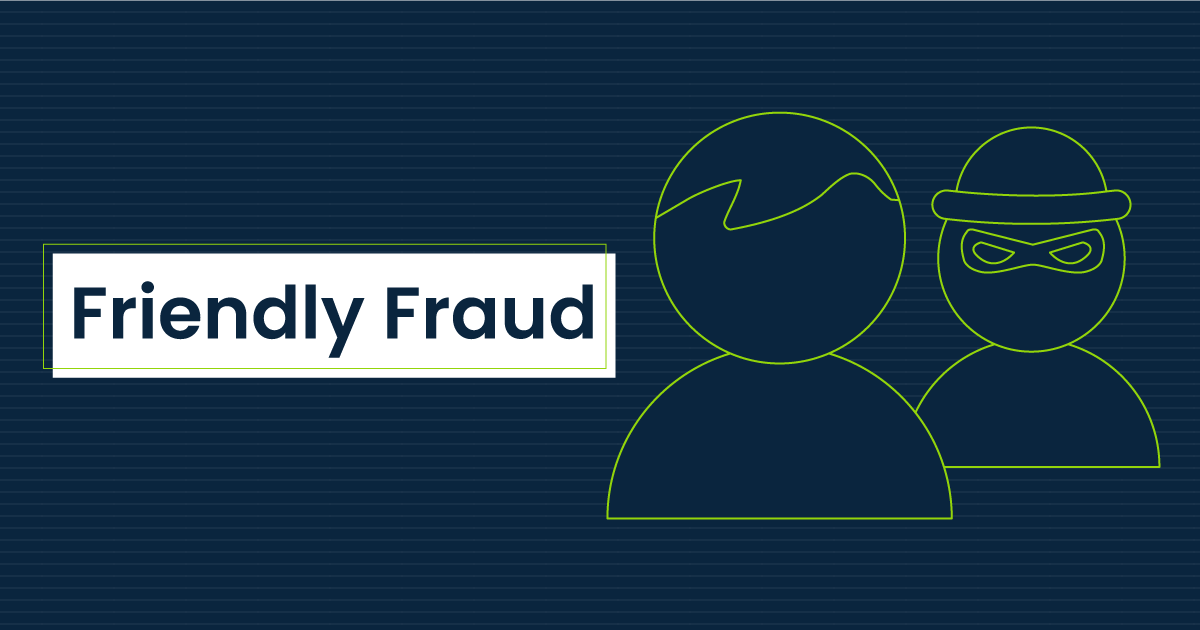When most of us think of credit card fraud, we envision the stereotypical thieves, con artists, and hackers. Unscrupulous wrongdoers on a mission to pilfer money, stockpile identities, and wreak general havoc upon the lives of their victims.
Fortunately, most card issuers have consumer protection measures in place to reverse illegitimate transactions. A chargeback occurs when the bank revokes a disputed payment from the merchant and returns funds to the cardholder.
What is Friendly Fraud?
In some cases, the cardholder alone is responsible for the “suspicious” account activity. Moreover, this individual may not even realize the questionable charge was, in fact, a valid payment. Friendly fraud refers to any situation in which the cardholder submits a false report of credit card fraud.
Chargeback: The reversal of a reportedly fraudulent credit card payment, wherein the bank revokes funds from the merchant and returns the money to the cardholder's account.
Friendly Fraud: Any situation in which a cardholder erroneously reports a suspicious credit card charge, whether by mistake or with criminal intent.
5 Common Types of Friendly Fraud
1. Refund-Chargeback Confusion
Some people confuse the concepts of refunds and chargebacks. Rather than contacting their insurers (or other merchants) to obtain a refund, these customers go directly to their banks to reverse the charges.
Prevention: Make sure your cancellation and refund policies are clear, concise, and easy to find. Provide contact information, so policyholders know exactly where to go to discuss a refund.
2. Faulty Memory
Even the sharpest of memories can falter every now and again, resulting in a mistaken fraud report. Multitasking, exhaustion, disruptive events, and “auto-pilot mode” all have the power to erase a hastily paid bill - or a previously scheduled recurring payment - from an otherwise healthy memory.
Prevention: Deliver timely written receipts for each premiums payment. Email and SMS/text are popular channels for sending these confirmations to customers.
3. Unrecognizable Descriptor
Sometimes an organization’s billing descriptor - the name displayed on the customer’s credit card statement - differs from the familiar company name. This can happen in “DBA” situations, or when a company rebrands under a new name after setting up the merchant account. If your policyholders don’t recognize a line-item on their statements, they will be more likely to suspect fraud.
Prevention: Update your billing descriptor with your Merchant Service Provider (MSP) to match the company name known by your customers.
4. “Left-hand/Right-hand”
When a credit card is shared between family members (or partners, coworkers, etc.), sometimes the different users fail to communicate their card activity with one another. If the bill-payer is unaware of another signer’s valid purchase, unexplained charges can be misconstrued as fraud.
Prevention: This is another case in which an accurate, recognizable billing descriptor is helpful for clarifying purchases between different signers on the same account.
5. Malicious Intent
Friendly fraud is not always caused by an innocent mix up. Some people deliberately abuse consumer protections, deceitfully reporting fraud where there is none. A cardholder might falsely claim that an item wasn’t delivered, a service was never provided, or a transaction was unapproved, just to get a charge reversed (at the expense of the merchant).
Prevention: The best way to prevent intentional friendly fraud is to weed out the scammers during the underwriting process, using comprehensive analytics to identify and exclude high-risk offenders. Strict authorization and authentication processes are also important for keeping would-be fraudsters from generating false chargebacks.
Conclusion
When developing your data security and fraud prevention strategy, be sure to consider the cardholders themselves as part of your risk analysis. Most instances of friendly fraud can be averted with a few simple, proactive steps.
- Prominently post your cancellation and refund policy in clear, concise terms.
- Deliver timely written receipts for each payment.
- Make sure your billing descriptor matches your familiar company name.
- Identify and exclude high-risk fraudsters in the underwriting process.
- Enforce strict authorization and authentication processes when accepting payments.
Payment processors also play a key role in fraud protection and mitigation. Make sure your provider is certified and compliant with the highest security standards, and has a dedicated point person or team to help you handle any chargeback issues that may arise.

